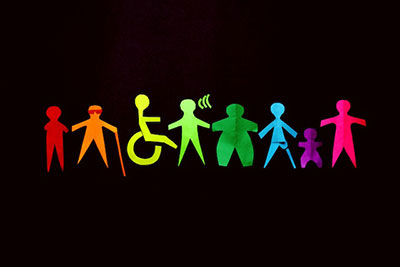
In our first blog post of 2018, we hear from Dr. Gurjit Sandhu, a Queen’s alumna and faculty member in the Department of Surgery at the University of Michigan. In this piece, Dr. Sandhu reflects upon the meanings of diversity, equity, and inclusion.
In keeping with the theme of the 2017-2018 Together We Are blog, I am in the midst of looking ahead, only to find myself looking back to my time at Queen’s University. The knowledge and understanding I developed about diversity, equity and inclusion continues to provide me with a multifaceted lens of inquiry for my current position in medical education. Although the context and content of the work may have changed, the foundational principles of equity remain the same.
While at Queen’s University, I transitioned through the roles of student, staff and faculty member; contributed to programs and policies; collaborated on training; and contemplated theory. I recognize now that in each of these roles and responsibilities, I was developing an understanding of diversity, equity and inclusion in different ways depending on how I was positioned. I would then draw on each of these approaches as needed to make a meaningful connection with Queen’s community members to advance our collective commitment to equity.
A colleague recently reminded me of a framework for thinking about separate, yet associated, appeals – those of ethos, pathos, and logos. This framework also helps me organize several approaches that resonate with me when engaging with diversity, equity, and inclusion.
Ethos is an ethical appeal. It embodies an unbiased presentation with a great deal of intentionality in choosing the right vocabulary. Mahzarin Banaji and Anthony Greenwald explore hidden and implicit biases in their book, “Blindspot.” Using the Implicit-Association Test, a method they developed about twenty years ago, they unpack individual responses to better understand how experiences manifest into hidden biases. The focus is on less reflective parts of our minds and the influence this has on decisions we make about ourselves and other social groups. When I think about hiring practices, employing ethos has a great deal of relevance.
Pathos is an emotional appeal. The audience is persuaded based by an emotional experience and how they are made to feel. The work of the world-class Center for Positive Organization at the University of Michigan disrupts the pervasive story of a fiercely competitive business world. The focus is on appreciative inquiry, collaboration, and success through diversity of partnerships. Central to the purpose of the Center is positive culture and positive relationships. When I think about community building and engagement, it is important to include pathos in the approach.
Logos is a logical appeal. The persuasive content is delivered with heavy reliance on facts and supportive statistics. In his book “The Diversity Bonus,” Scott Page makes the mathematical and economic argument for enhancing team diversity. He shows evidence through algorithms, formulas, and net results. The bottom-line: leveraging cognitive diversity results in better outcomes. These measurable outcomes, for example, include higher profit margins, increasing scientific innovation, and more in-depth inquiry in our classrooms. When I think about admissions strategies, logos is at the fore.
Looking back and looking ahead at diversity, equity, and inclusion, the lens of ethos, pathos, and logos reminds me that this work is foundational to the strength of communities, institutions, and who we are as individuals. As I think about the Equity Office and the Human Rights Office at Queen’s University, I wonder if it is possible to entirely leave a place. For me, the experiences, relationships, and milestones are indelible and palpable. They have become a part of the landscape of my life.